Dynamic Pressure Therapy Mode, stems from Intermittent Mode. According to the research by Michael J. Morykwas in 1997 ①, the principle of Intermittent Mode is to change the blood flow of wounds through intermittent negative pressure.
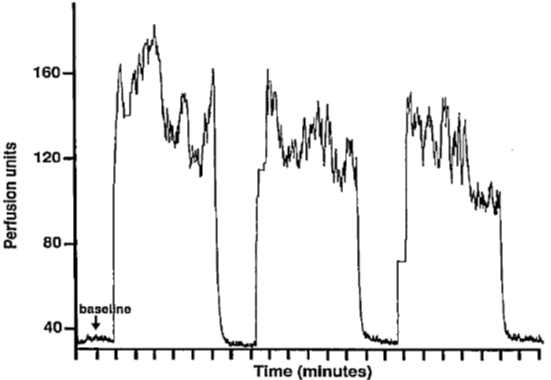
The intermittent negative pressure changes the blood flow of the wound, and the final mean value is about 4 times the normal level.
Morykwas also studied the clinical effect of intermittent pressure therapy. The results showed that intermittent pressure had more granulation growth than continuous pressure.
- Morykwas MJ, Argenta LC, Shelton-Brown EI, McGuirt W. Vacuum assisted closure: a new method for wound control and treatment: animal studies and basic foundation. Ann Plast Surg 1997; 38(6):553-62.
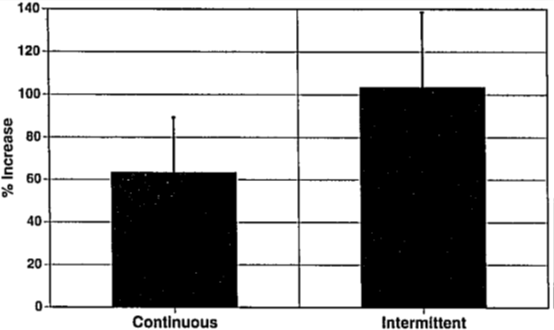
Comparison of Continuous and Intermittent negative pressure on granulation tissue growth
But the further research of Wackenfors①② and Kairinos③ towards negative pressure wound blood flow, under the effect of negative pressure, the blood flow is affected by the distance between vessel and wound surface, and the blood flow is not 100% increased under the effect of negative pressure. On the contrary, the blood flow which is 0.5cm from the wound surface is decreased.
- Wackenfors A, Sjogren J, Gustafsson R, et al. Effects of vacuum assisted closure therapy on inguinal wound edge microvascular blood flow. Wound Repair Regen 2004; 12(6):600-6.
- Wackenfors A, Gustafsson R, Sjogren J, et al. Blood flow responses in the peristernal thoracic wall during vacuum-assisted closure therapy. Ann Thorac Surg 2005;79(5):1724-30; discussion 1730-1.
- Kairinos N, Voogd AM, Botha PH, et al. Negative-pressure wound therapy II:negative-pressure wound therapy and increased perfusion. Just an illusion? Plast Reconstr Surg 2009; 123(2):601-12.
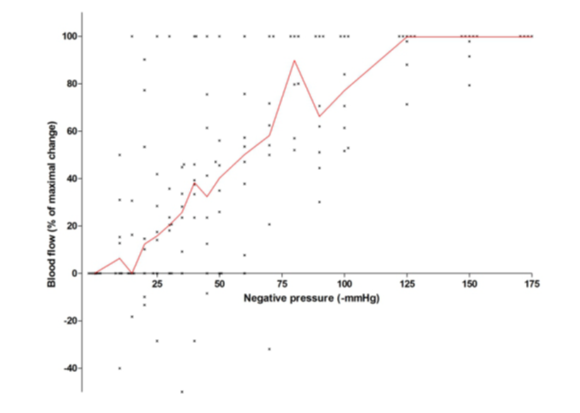
The change of blood flow at 2.5 cm under the surface of the wound with negative pressure in the wound
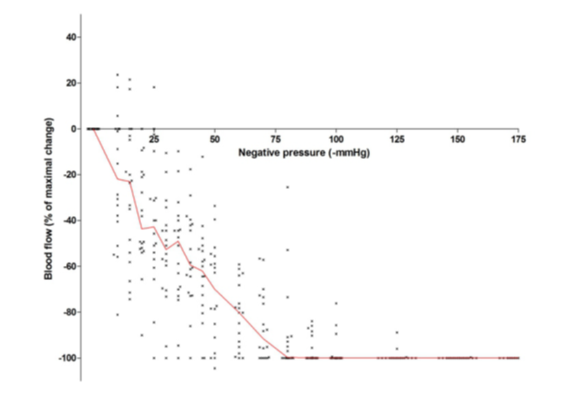
The change of blood flow at 0.5 cm under the surface of the wound with negative pressure in the wound
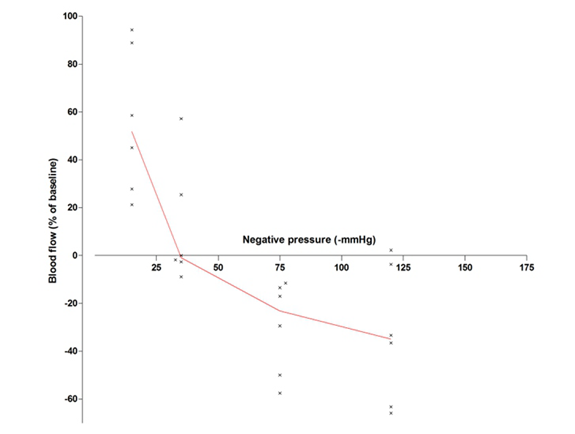
The change of blood flow at 1 cm under the surface of the wound with negative pressure in the wound
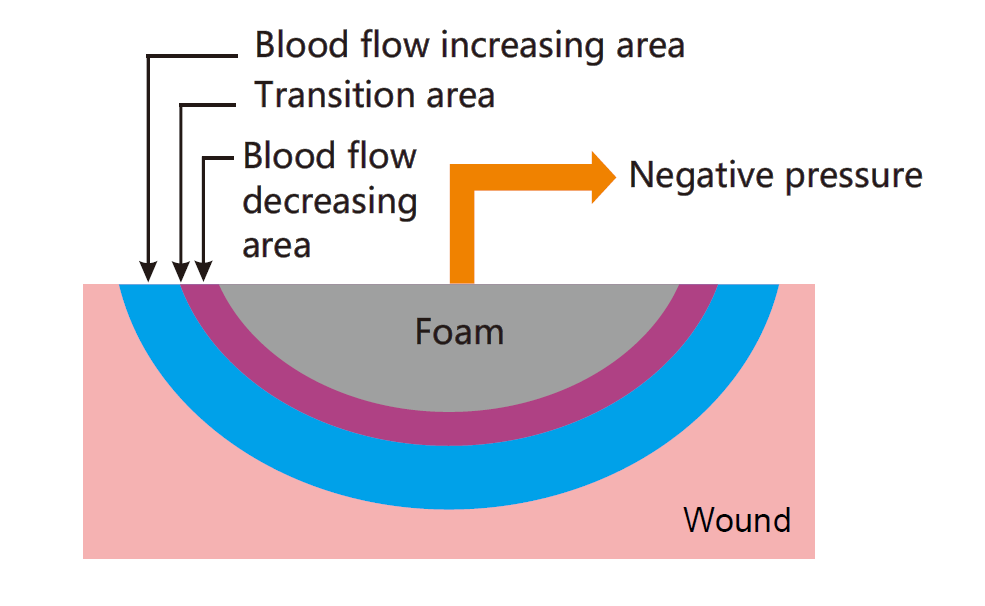
Meanwhile, study by Gupta ① shows, the sudden pressure changes of intermittent mode may cause pain to patients. It is also found that patients with intermittent mode treatment have more pain complains than patients with continuous mode treatment.
Based on the above study, Eberlein ② suggested Dynamic Mode as replacement of Intermittent Mode. After clinical prove by Malmsjo ③ Dynamic Mode has no difference with Intermittent on clinical performance, even better. At the same time, it reduces pain to patients greatly.
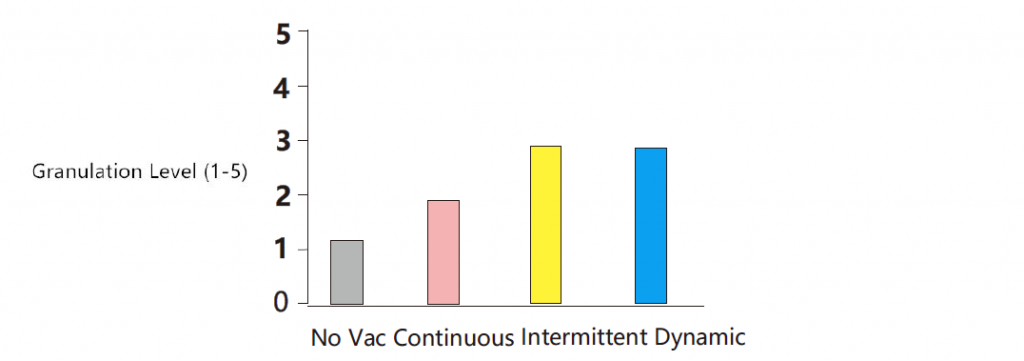
- Gupta S, Baharestani M, Baranoski S, et al. Guidelines for managing pressure ulcers with negative pressure wound therapy. Adv Skin Wound Care 2004; 17 Suppl 2:1-16.
- Eberlein T, Fendler H. Using a new technique of negative pressure wound therapy(NPWT), variable pressure therapy (VPT), for the management of chronic, nonhealing wounds. Clinical Symposium for Advanced Wound Care (SAWC; Dallas,Texas) 2009; April.
- Malmsjo M, Gustafsson L, Lindstedt S, Gesslein B, Ingemansson R. The effects of variable, intermittent, and continuous negative pressure wound therapy, using foam or gauze, on wound contraction, granulation tissue formation, and ingrowth into the wound filler. Eplasty. 2012;12:e5.
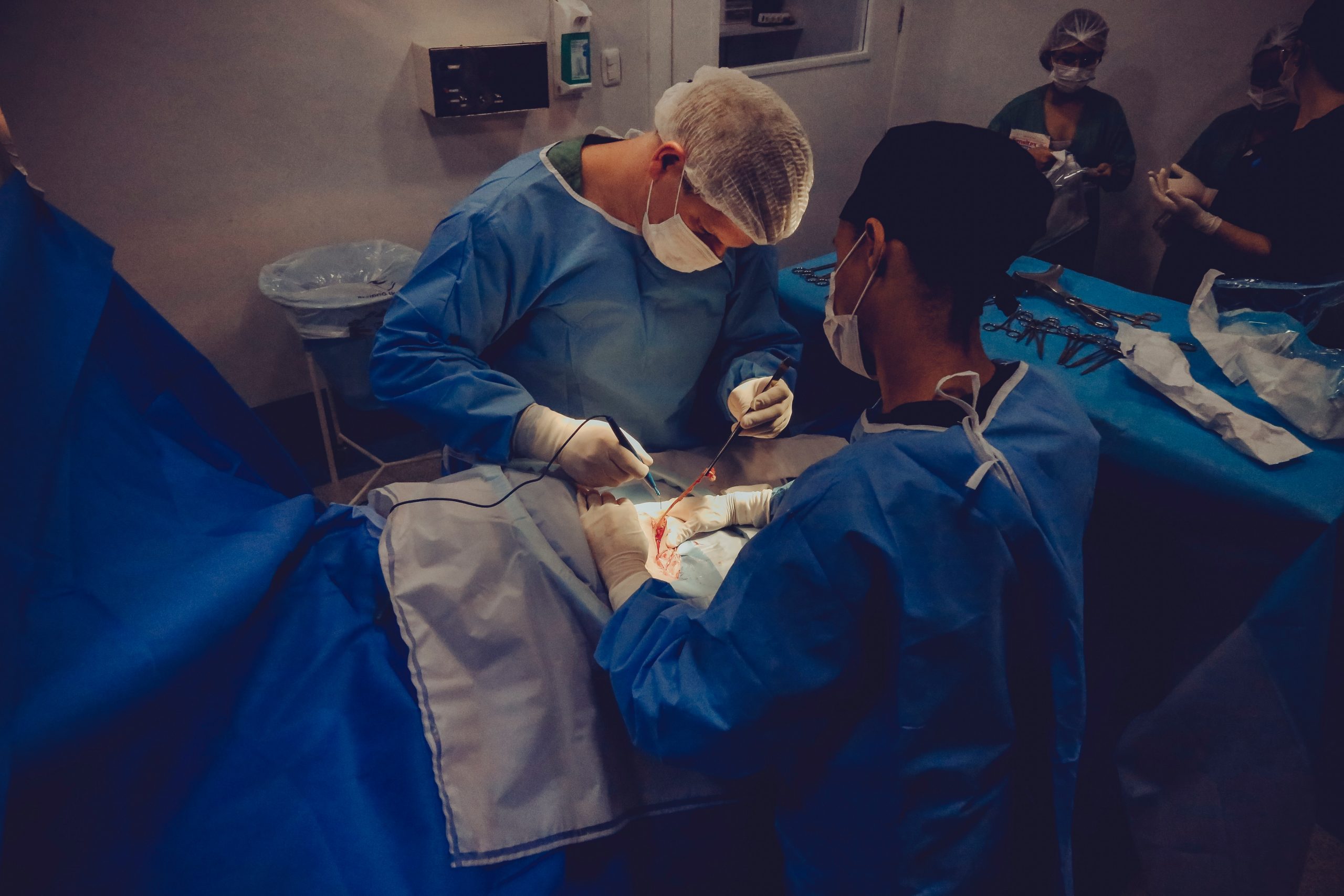
‘Empowering Health, Enriching Lives: Together We Thrive’
Cutting-Edge Medical Technology: Our designs revolutionize daily living, pushing the boundaries of what’s possible.
Empowering Healthcare Professionals: We support healthcare providers in restoring health and mobility, enabling patients to thrive.
Optimal Health and Mobility: Our advanced solutions enhance lives, fostering faster recovery and improved well-being.
Unmatched Performance, Competitive Prices: Delivering unparalleled performance at affordable rates, making quality care accessible to all.
- Taizhou Longer Intelligent Technology Co.,Ltd
- Building 7, North Side of Kechuang Pioneering Avenue, Gaogang
- District, Taizhou City, Jiangsu Province, China
- Contact: Kevin Zeng
- longertech@aliyun.com
- Whatsapp: +86-13382133835
- Telegram: +86-13382133835